Lamborghini’s new Temerario hybrid is more powerful, revs higher, and accelerates harder than the Huracan it replaces. But it’s a bittersweet debut because the V8-powered Temerario is missing one feature that’s been present on every new baby Lambo since the launch of the Gallardo on 2003: a V10 engine.
More: 10 Cars That Switched Names Before Launch Like Alfa Romeo’s Milano
The demise of the Huracan means it’s no longer possible to buy a new road car from any automaker with V10 power. But for a while they seemed to be everywhere and fitted to everything, from trucks and SUVs, to wagons and supercars. So to salute those cars who felt eight cylinders simply wasn’t enough, here’s a rundown of 10 of the greatest V10s.
Dodge/SRT Viper (1992-2017)
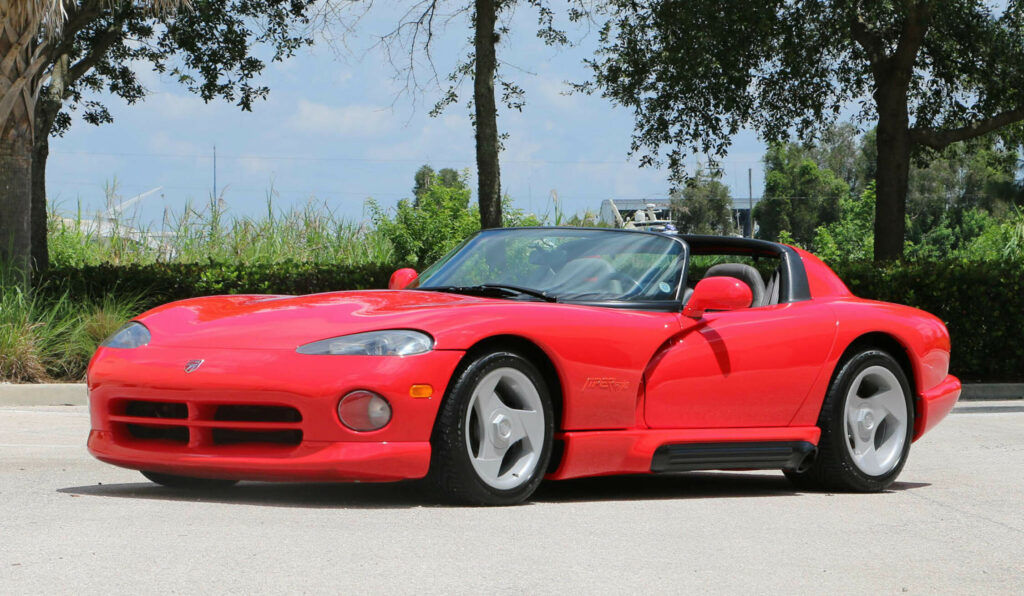
The original Viper R/T10 didn’t only resurrect Dodge’s performance reputation, it kick-started the car industry’s three-decade fascination with V10 engines.
Chrysler was already working on an 8.0-liter V10 for its trucks while Viper development was taking place, but the Viper engineers didn’t want their roadster to drive like a Ram 2500 convertible, and besides, the cast iron monster wasn’t going to be ready in time. So the Viper team, together with Lamborghini, then in Chrysler ownership, built their own version of the V10 with high performance components and an aluminum block.
Related: Viper V10-Powered Motorcycle With 500 HP Is A True Monster On Two Wheels
The 1992 Viper’s 8.0-liter V10 made 400 hp (406 PS) – compared with 300 hp (304 PS) for the Magnum V10 that debuted in truck applications in 1994 – and output had climbed to 645 hp (654 PS) by the time the 8.4-liter SRT Viper bowed out in 2017.
Dodge Ram 2500/3500 V10 (1994-2003)
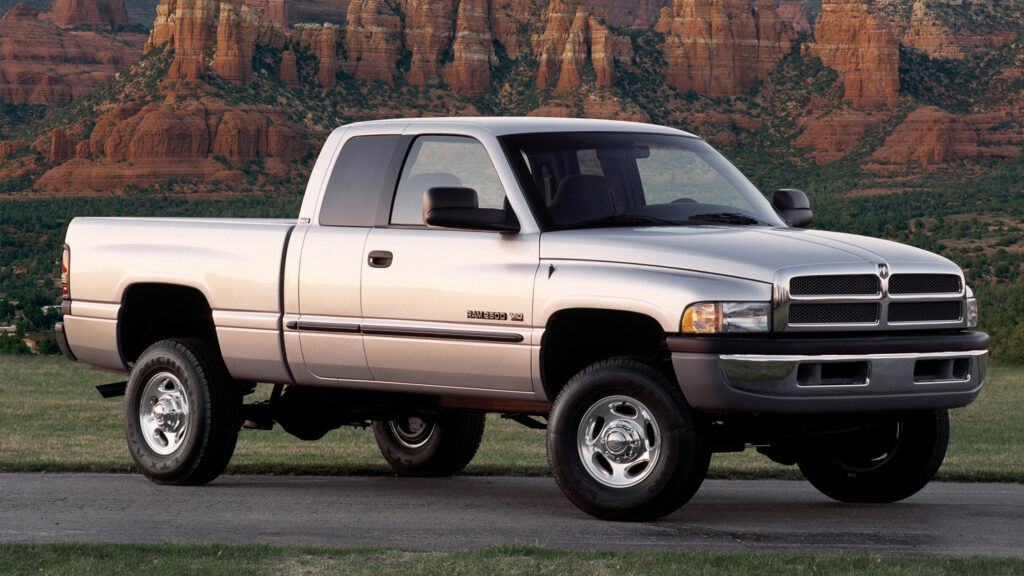
The Magnum V10’s 300 hp (304 PS) and low rev ceiling might not have impressed Viper engineers, but its ability to generate 450 lb-ft (610 Nm) at just 2,400 rpm made it perfect for Dodge’s big Ram 2500 and 3500 trucks in the days before we realized that 9 mpg was lunacy.
The Magnum V10 was dropped in 2003, by which time Chrysler’s new Hemi and monstrously torquey Cummins diesels had its bases covered with better economy. But the SRT-10 arrived a year later, offering truck buyers 510 hp (517 PS) of genuine Viper V10 power for the first time.
And Ford, which came up with its own 6.8-liter V10 in 1996, was slotting monster-sized motors into Super Duty vehicles as late as 2019. Blue Oval and Mopar guys are still arguing over which was best.
Lamborghini Gallardo/Huracan (2004-2024)
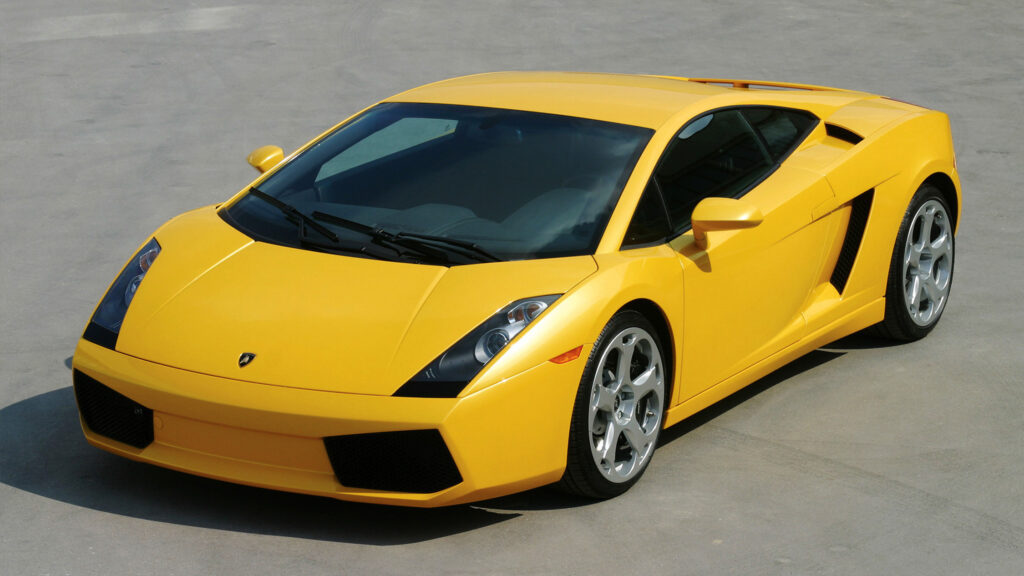
Lamborghini’s plan to crush Ferrari’s 360 Modena involved offering more of everything: more power, more-wheel drive and more cylinders. So instead of just matching the Modena’s 395 hp (400 PS) V8, Lambo’s engineers cooked up a 5.0-liter V10 based on a 4.0-liter V10 they had designed, then abandoned, in the 1990s.
The Gallardo landed in 2003, kicking out a then-serious 493 hp (500 PS) and out-torqued its Ferrari nemesis to the tune of 101 lb -ft (137 Nm). Hasta la vista, Enzo.
Audi R8 V10 (2009-2024)
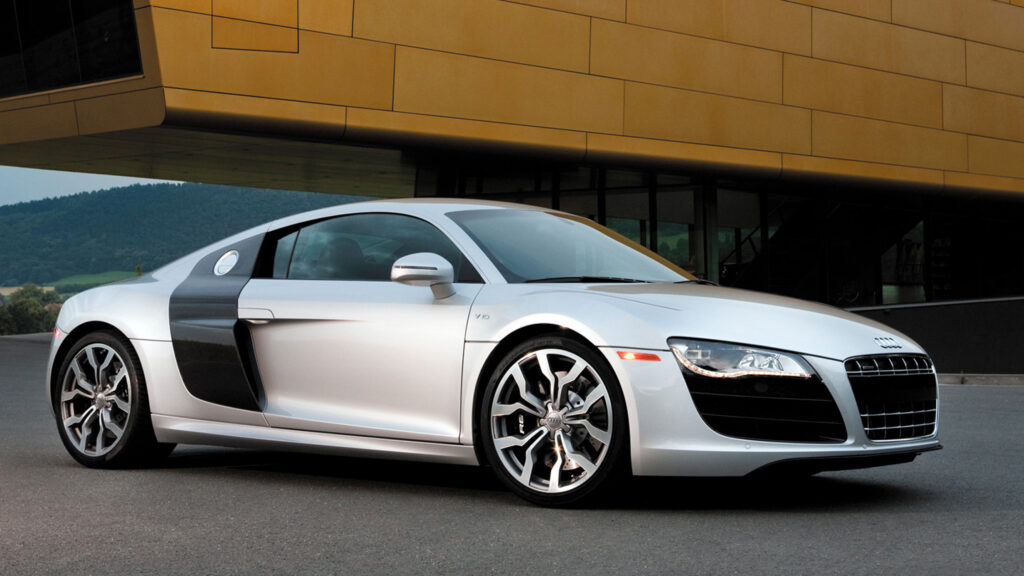
The original Gallardo kept its V10 to itself, whatever your Audi S6-owning neighbor claims. But 2008’s facelifted LP560 Gallardo debuted a new 552 hp (560 PS) 5.2-liter V10 with direct fuel injection and a totally different firing order and bore spacing that was based on Audi’s newer V10.
Audi already had its own version of the Gallardo in the V8-powered R8, and in 2009 the R8 V8 gained a V10 big brother when Audi made a 518 hp (525PS) version of the Lambo’s updated engine available. Both brands pushed outputs higher over the next 15 years, horsepower peaking at 631 hp (640 PS) in the Gallardo’s successor, the Huracan.
BMW M5/M6 V10 (2005-2010)
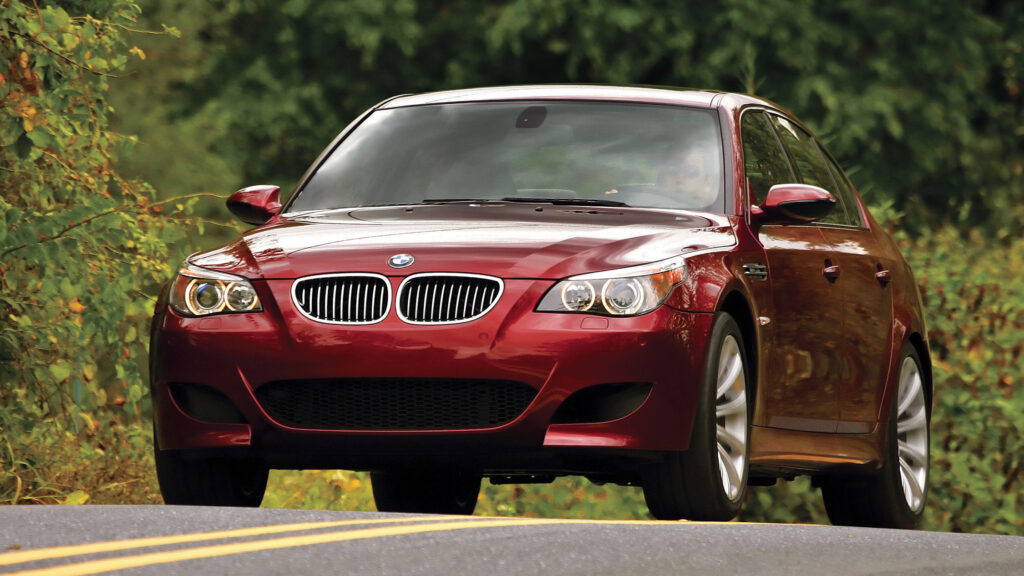
BMW’s E60 M5 (and E63 M6 coupe) chews through fuel, rod bearings and throttle actuators, but it’s hard not to love a sensible-looking sedan that sounds like an F1 car and was more successful than BMW’s real V10-powered F1 racer.
M5s before and since have been more rounded – the S85 V10 gave you 500 hp (507 PS) and 8,250 rpm to play with, but the sky-high 6,100 rpm torque peak meant you worked for your kicks. None, however, has felt this unhinged. And we love unhinged.
Audi RS6 (2008-2010)
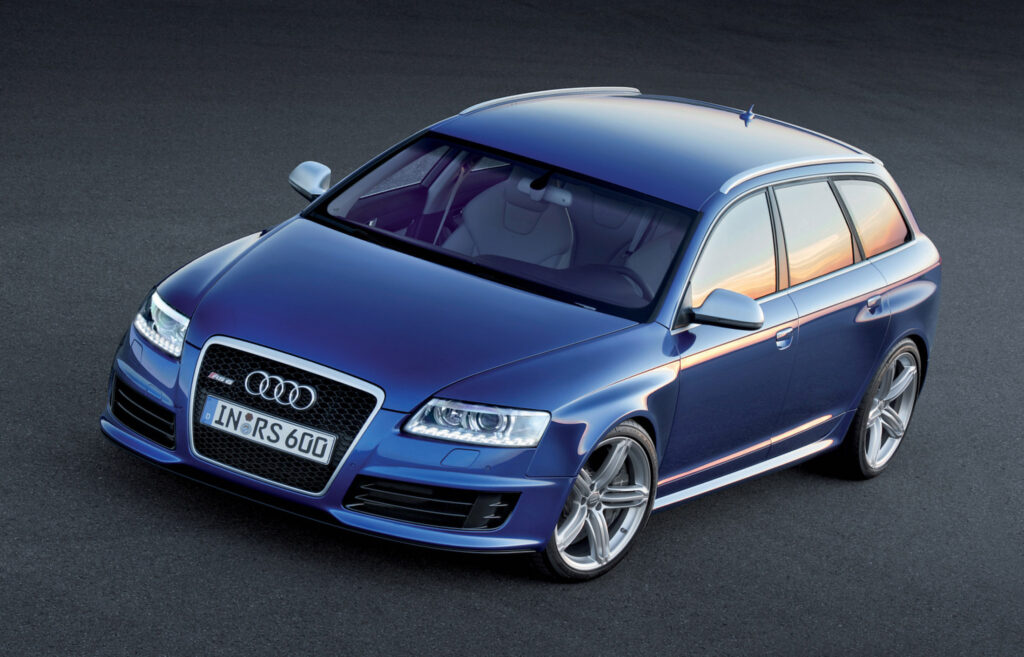
BMW’s M5 had already been rocking V10 power for a couple of years when Audi started upsizing its own V8 sedans and wagons. First came the 2007 S6, which only developed 429 hp (435 PS) from its 5.2-liter V10 and looked so dull you’d have guessed it made half of that. Then the bigger S8 got a dose of the same medicine, but with the power edged up to a still ho-hum 444 hp (450 PS). Surely Audi could do better?
It could. Far more fun than the S duo – except in the US where it wasn’t available – was the 2008 RS6, especially in optional wagon form. Despite giving away 200cc to the S cars, the RS’s revamped V10 developed a herculean 572 hp (580 PS) and 479 lb-ft (650 Nm), throwing so much shade on its M5 rival it felt like Munich was in a blackout.
VW Touareg V10 TDI (2002-10)
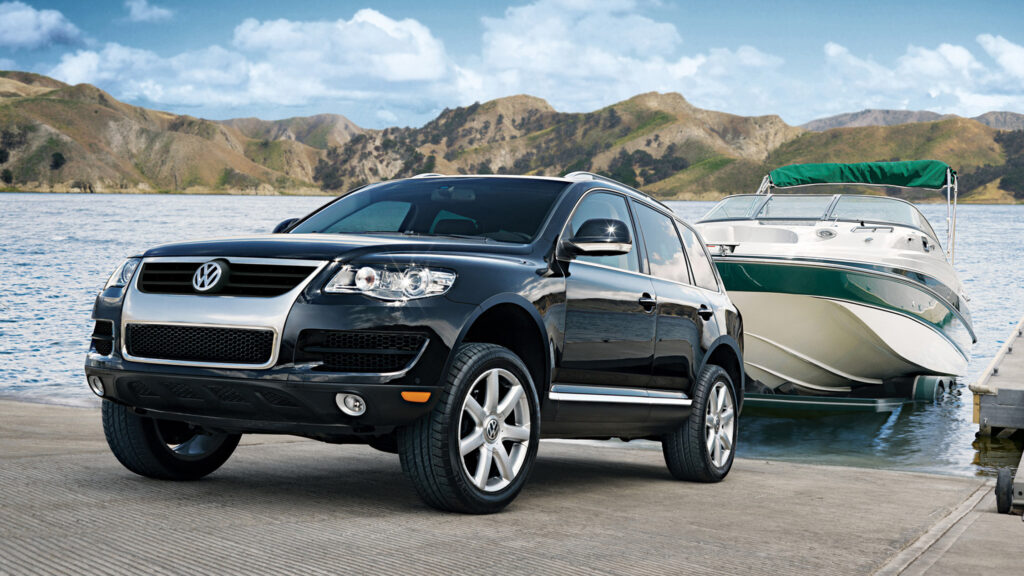
Reminding us that VW was way more fun before the Dieselgate scandal, the original mid-2000s Touareg SUV and Phaeton luxury sedan had not one but two insanely over-the-top engine options. One was a 444 hp (450 PS) 6.0-liter W12, a naturally-aspirated version of the Bentley Continental’s twin-turbo motor, and the other was a 4.9-liter turbocharged V10 diesel.
The V10 only made 309 hp (313 PS), or 345 hp (350 PS) in the Touareg R50 but as much as 627 lb-ft (850 Nm), on-hand at just 2,000 rpm came in handy for towing things like boats and Boeing 747s, which VW did for a PR stunt in 2006.
Porsche Carrera GT (2004-06)
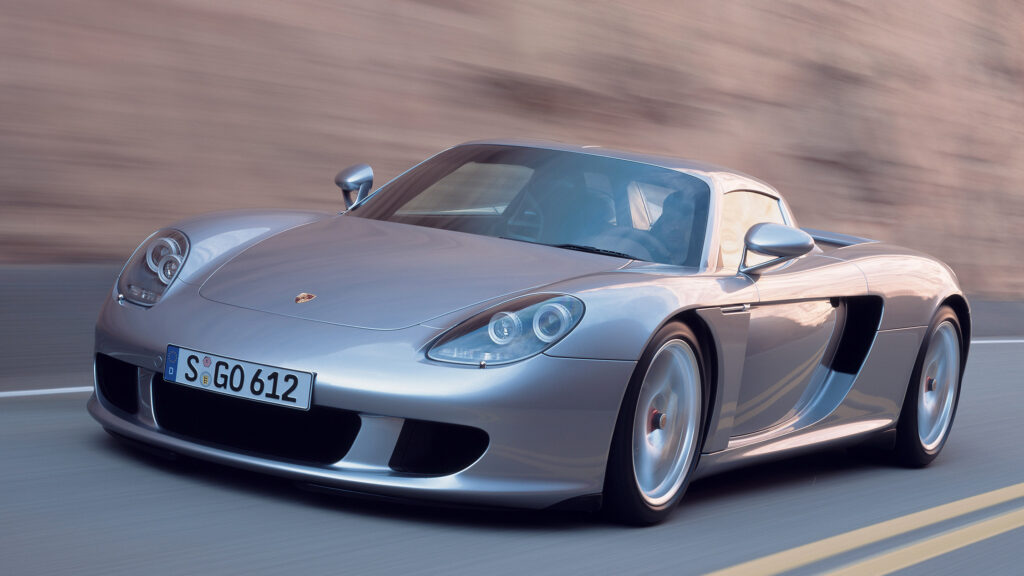
The Carrera GT’s a strong candidate for the greatest-sounding road car of all time, and maybe that’s not a surprise when you learn that its 5.0-liter V10 had its roots in a stillborn F1 engine. Porsche had developed the motor for the Footwork F1 team in the early 1990s and later re-engineered it for a Le Mans car of its own making that never happened either.
A 603 hp (612 PS) output made the Carrera GT’s V10 less potent than the 651 hp (660 PS), 6.0-liter V12 in its Ferrari Enzo rival, but only the Porsche came with a manual transmission.
Lexus LFA (2010-12)
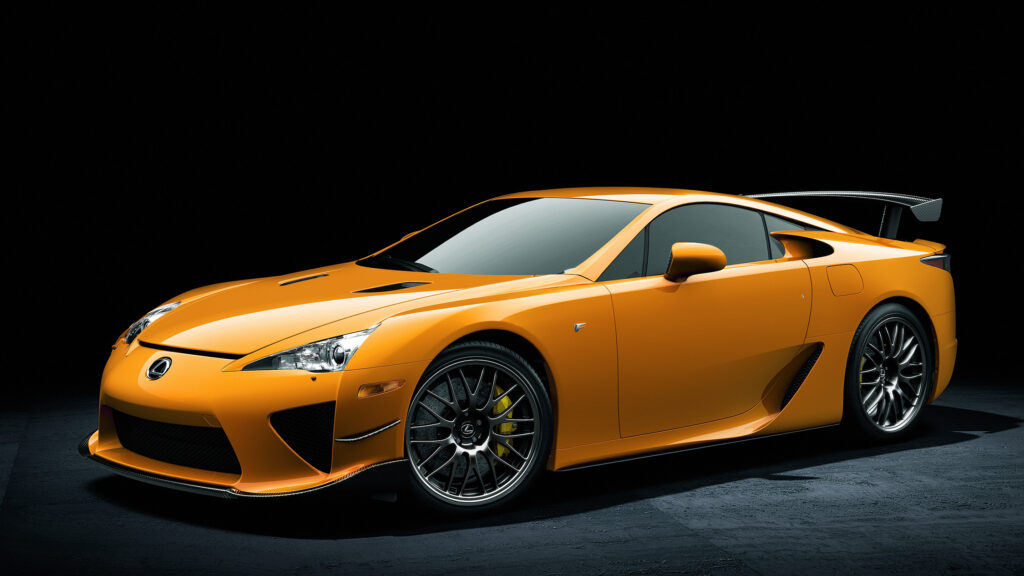
You know you’re in for a sonic treat when an automaker tells you it teamed up with Yamaha’s music division to tune the exhaust on its new 4.8-liter V10. Or when it claims it had to fit a digital gauge pack because the engine revs so fast an analog cluster couldn’t keep up.
The all-carbon LFA was rated at 552 hp (560 PS), or 10 hp (10 PS) more in Nurburgring trim, and the V10 was pushed so tight to the firewall you’d swear from the handling balance that it was mounted behind the seats, not in front. We’ve waited 10 years for a successor, and this fall we might finally get one.
Bonus: Honda/Acura NSX (2007)
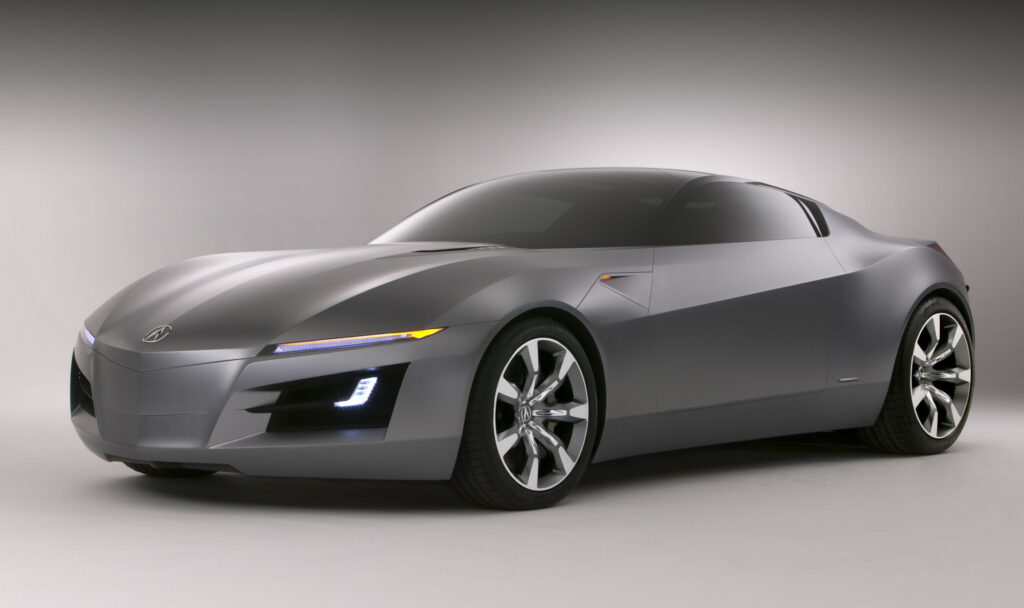
Ah, what might have been. While Lexus was working on the LFA in the late ’00s, Honda was busy cooking up something kinda similar, another front-mid-mounted V10 coupe. It got so far as testing prototypes at the Nurburgring and even gave us a taste of what it would look like via the 2007 Acura ASCC concept.
Sadly, tough economic conditions forced Honda to abandon its NSX successor, and its F1 program, the following year. Some of the tech and lessons learned from the project did go into the HSV-010 GT Honda raced in the Japanese Super GT series, but we’d have to wait until 2016 to get our hands on a new NSX, and when it did arrive there was no sign of the V10.




